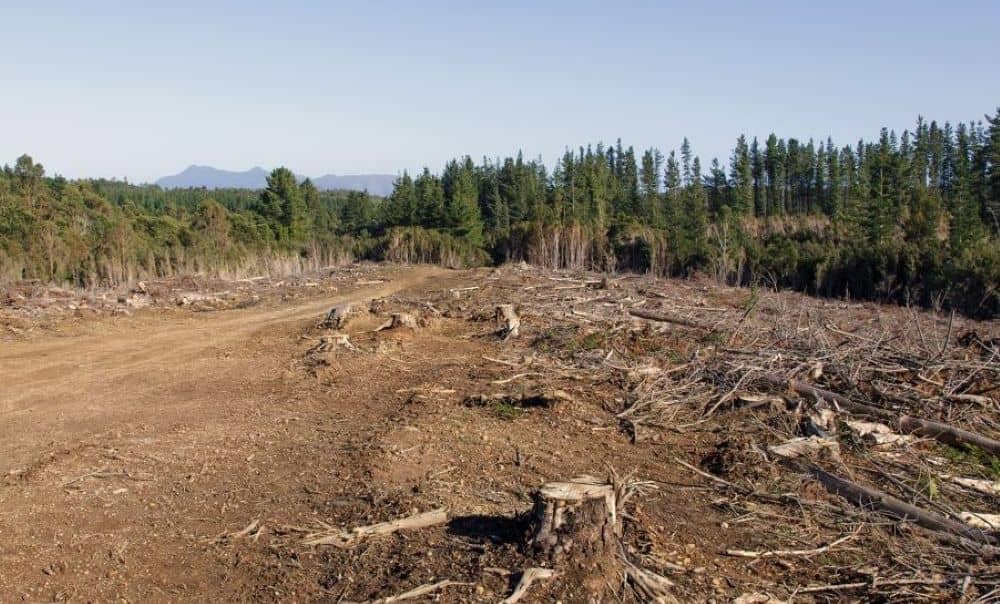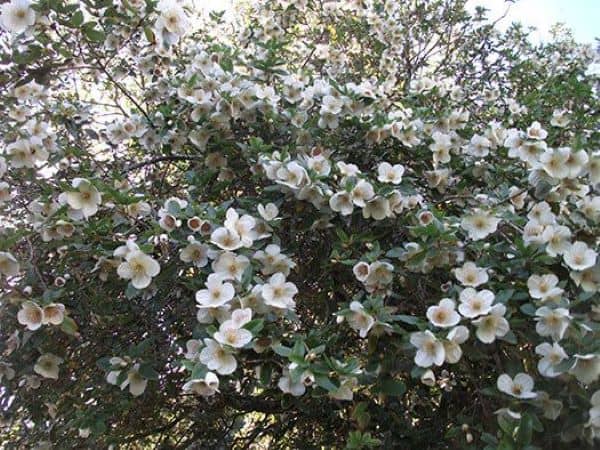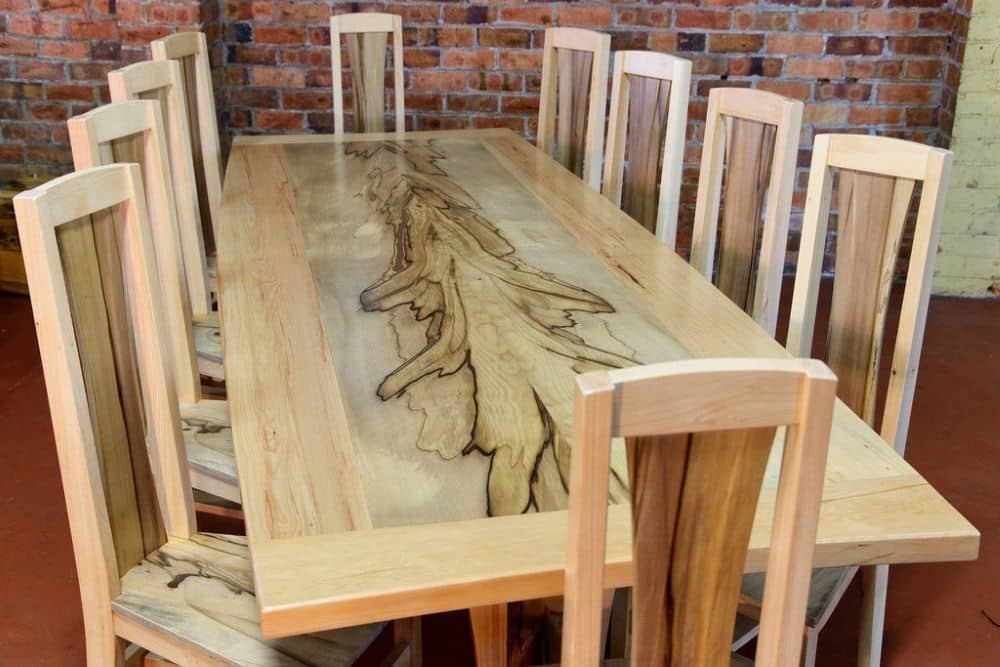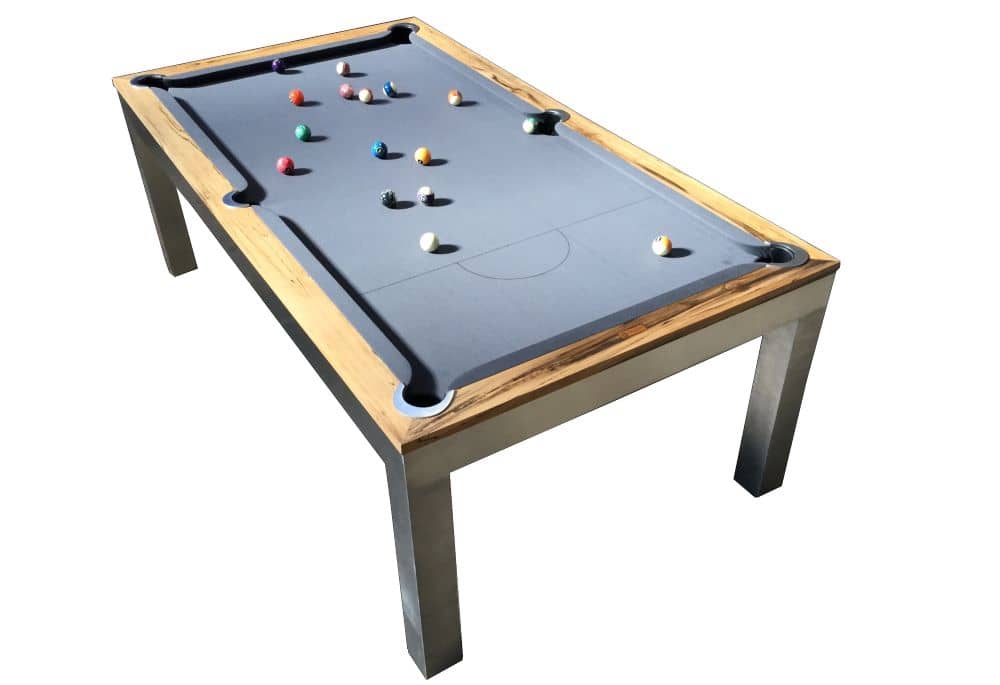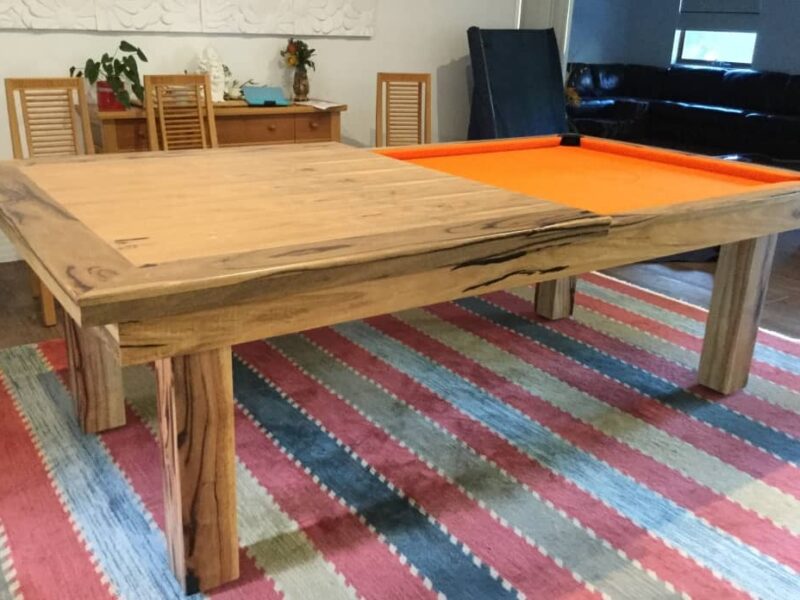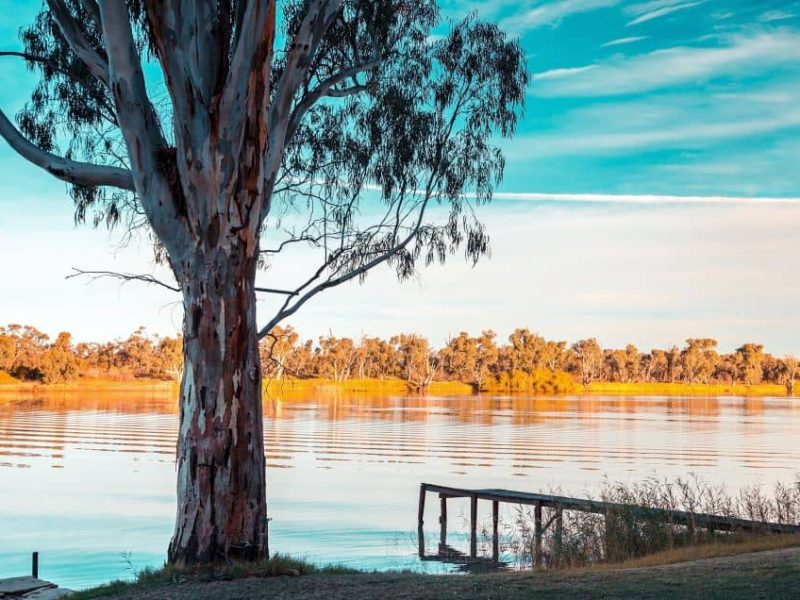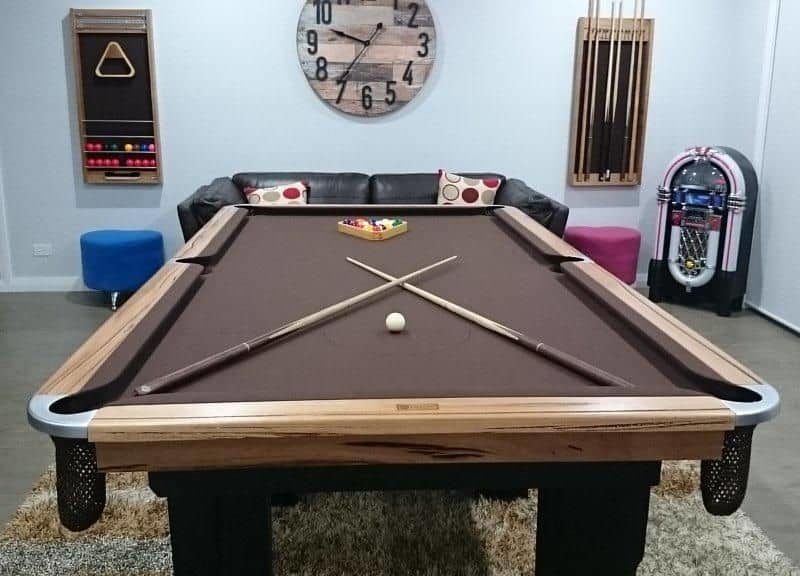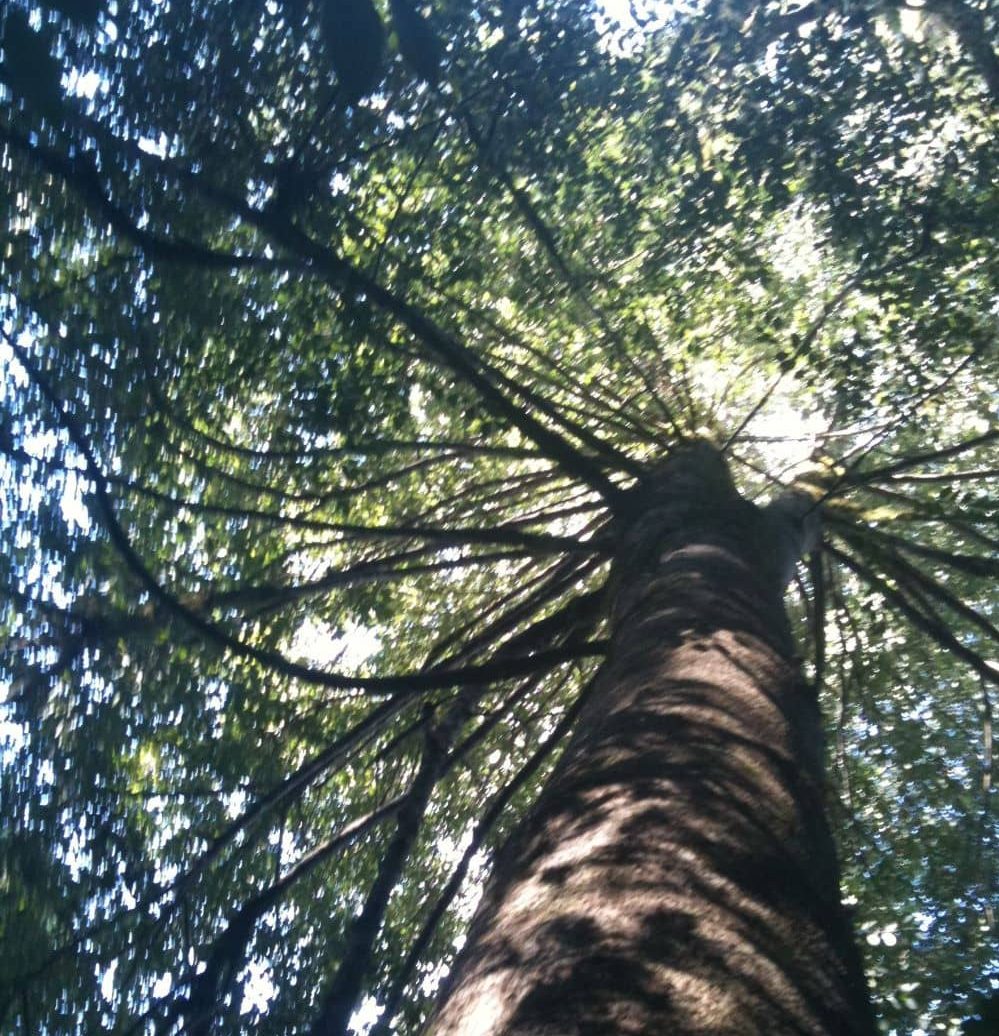
Interesting Facts about the Tasmanian Blackheart Sassafras
When looking for wood for furniture, there are a few considerations to make. Often, it is a matter of preference, although it makes sense to look into the timber’s grain structure, the type of wood (soft vs hard), and the tree itself from where the timber came from. If you have been contemplating on what wood is best for your furniture piece, you may have come across the Tasmanian Blackheart Sassafras as one of your top choices.
In this blog post, we touch on Tasmanian forestry and the timbers found in its rainforests. But more importantly, we talk about the Tasmanian Blackheart Sassafras or simply Sassafras. Why is it one of the preferred raw materials for furniture and other woodwork? Let’s find out.
What is Sassafras?
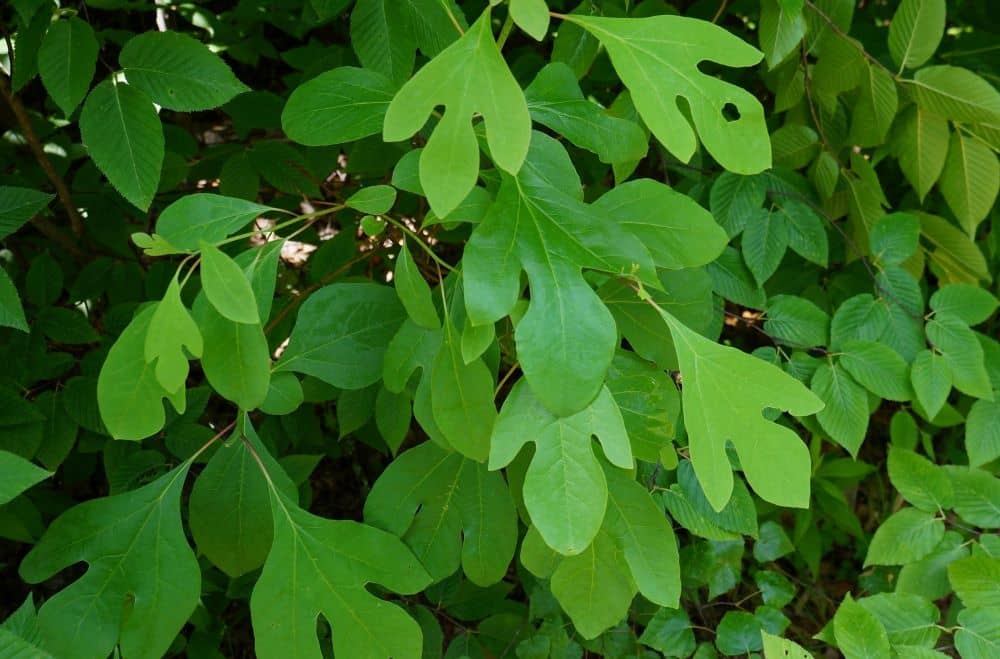
There are numerous beautiful timbers in Tasmanian rainforests, including Sassafras. To avoid confusion, timbers are a form of processed wood turned into planks and beams. If the wood can yield the minimum dimensional size required, it is timber and can be used for different purposes, especially building a house and making furniture.
Now, let us talk about Sassafras. You are probably wondering, “What is a Tasmanian Blackheart Sassafras anyway?”
Sassafras is one of the most exceptional timbers in the world. It has a unique blend of gold and dark colours and hails from the rainforests of Tasmania. Sassafras is an evergreen tree that thrives in a cool and temperate location. The tree itself is easily recognisable, thanks to its conical shape and leaves that resemble saw teeth. But the most distinctive characteristic is the smell. The tree emits a fragrance almost imitating sarsaparilla. When you smell it, you know you have a sassafras timber.
Another excellent quality is the coarse grain pattern, which is similar to that of the Oak or Ash tree. It is one of the main reasons why woodworkers love Sassafras.
The Tasmanian Blackheart Sassafras is not a very tall tree, although it can also grow up to 25 metres. There are older sassafras trees that stand as tall as 40 metres or more. The diameter averages 75 cm, particularly if it is in its best conditions where the soil is well-drained, cool, and damp. When cared for or at least left in its suitable environment, it can live for up to 200 years.
The Blackheart variety was named by a French naturalist, Jacques Labillardière when he saw the tree in the early 1800s. It was named so because of its black and brown streaks that appear on the centre of its golden-grey timber.
But these streaks are not innate. They are a mark of suffering. When a Tasmanian Blackheart Sassafras suffers storm damage or any trauma during its lifetime, fungi enter the bark and cause the stain. This “flaw” is actually what makes it unique and appealing, which is why it is one of the most sought-after timbers around.
The Tasmanian Forestry Industry
The forestry industry in the country, including in Tasmania, is essential to the economy mainly because of its job contribution. Over the last decade, changes in the industry have taken place. Some examples are the huge number of jobs generated and the improvement in the quality of work.
In Tasmania, the forest industry has become quite diverse but mostly focused on fibre and wood products from its native forests and plantations. The supply chain is divided into three parts:
- Primary production where trees are grown
- Processing which involves harvesting and logs to be turned into primary products, including pulp, paper, and woodchips
- Further processing for different products, such as paper packaging, furniture, and cabinetry
The State’s forest industry generally produces wood, paper, and fibre products which all have their sectors. Production sometimes declines but would increase in the next period. But among the primary goals is to remain sustainable. Several methods have been implemented to ensure the industry’s sustainability, including:
- Successfully retaining and recruiting workers
- Building worker skills through training
- Continuous research regarding the industry’s socio-economic effects
The history of the industry started as early as the period of European settlement in the country. In the 19th century, both the conservation and preservation of the Tasmanian forest was controlled by the Waste Lands Act. It included the Governor granting a licence for felling and removal of timber, and its sales in 1842 and beyond.
The 1863 amendment of the Act allowed further licencing. Tasmania was still called Van Diemen’s Land and only received its new name in 1856. Another amendment, which was presented in 1881, reserved land for timber preservation. Later on, in 1890, several Acts were combined to create a consolidated regulation.
Finally, in 1920, the Forestry Act called the establishment of the Tasmania Forestry Department. It is now called the Sustainable Timber Tasmania, which oversees all the activities and other related events in the industry. It’s a Government business that manages the State’s public production forest.
Other Timbers Found in Tasmania
Tasmania’s forest is as colourful and prolific as its industry’s history. Let’s take a look at some of the State’s most popular timbers:
1. Celery-Top Pine Native Conifer (Phyllocladus aspleniifolius)
This tree is mainly found in the western part of Tasmania. But it also thrives in isolated areas, especially on the east coast where the climate is so much dryer. The tree grows slowly, taking its time to develop. However, it has become quite dominant, particularly if it is soil with poor conditions. Unlike other trees, it will remain healthy and vibrant, growing anywhere from 15 to 40 metres tall.
It’s a favourite timber because of its reddish-brown grey hue, which is noticeable in the bark. The surface is knobbly, and foliage is almost like celery, which is why it is named so. The oldest Celery Top tree is about 800 years old.
When it turns into timber, it looks pale white or yellow when cut. The golden colour is achieved when it dries. It is a light timber with a hard, dense structure. Celery Top timbers are used in flooring and furniture making because it is incredibly robust. It is why it’s also used in woodturning and building boats for several years.
2. Leatherwood (Eucryphia lucida)
This species is endemic to Tasmania and can be found mostly in wet valleys and the western mountain regions. These areas receive more than 250mL of rainfall, which is what this tree loves. Leatherwood can grow up to 30 metres, but many do not go over 15 metres. It also stays as an understorey species in the Tasmanian Tall Eucalypt Forest. The tree can live for a long time, usually averaging 250 years. It thrives with other tree species, including Sassafras.
Leatherwood is not only popular in the State and country but also all over the world, particularly for its fine honey production from its pollen. The timber is good for furniture and veneer, as well as pulpwood. It is malleable and can create burl wood (burr), making it a highly-prized material.
3. Tasmanian Myrtle (Nothofagus cunninghamii)
This tree flourishes in the Tasmanian rainforests with cold temperate climates. But Myrtle grows throughout the State, particularly in the west and northwest regions. When in a moist, sheltered location, the tree will dominate. It lives long up to 500 years if it is in rich, fertile soil.
Myrtle is usually associated with Sassafras. It is slow-growing but can reach up to 40 metres. If you are familiar with the European Myrtle, this tree does not resemble it and is not related at all. Early timbermen simply decided to call it this way.
Its timber is striking with a deep rich colour, ranging from red to brown to orange. It is not unusual for the wood to have a pinkish hue. It also produces burl wood and Tiger Myrtle, which can be achieved through spalting. Commercially, the timber is used for building furniture pieces and veneers.
The Beauty and Quality of Sassafras Furniture
The Tasmanian timbers are all exotic and attractive, but Sassafras remains one of the best choices, particularly in making furniture. This tree is an understorey evergreen that grows quite well, especially in cool, temperate areas. Sassafras is very dominant with some of its species commonly found in gullies in soils that are well-drained but still moist.
The tree is usually covered in lichen. It has a variety of beautiful colours, making the tree famous for its timber. But Blackheart timber is what most people are after. It is infected with a fungal virus, which attacks the heartwood, resulting in a beautiful stain that appears black, brown, and greenish.
Sassafras produces strong timber but is still soft and light. Therefore, it is easy to work with. It can be used in furniture manufacturing, as well as cabinet making, panelling, woodturning, carving, and veneers.
When polished, it reaches a high finish, which gives it an excellent reputation in the furniture trade. Its creamy grey hue also delivers the unique look of each product. It is regarded as neither softwood nor hardwood; rather, it sits between the two varieties because it is solid yet light. It does not split, even though it can be springy, which is why it was the preferred material for clothes pegs. Also, it does not have high tannin content, unlike others, which can cause staining on fabrics.
Today, Sassafras is used in making furniture and decorative items. It is easy to work with, even when manipulating it by hand.
Of all timbers from Tasmania, Sassafras is the one with the most dynamic colouring. It is this distinction that guarantees that no two timber pieces look alike. Every saw log comes with special features, giving you a cut board that works like a one-off piece.
Sassafras has a beautiful, pale, and creamy grey colour, which can look white. But what sets it apart are the streaks of a black heart. It finishes to a grey tone with its timber appearing dark brown to black with some green streaks all over the wood.
It is available in two groupings: Blackheart and Golden. They both make an attractive laminated board, thanks to their solid knots and figures. It is due to these characteristics why its timber is prized for furniture, moulding, panelling, and turning.
Sassafras is one of those species with lore. Its claim to fame may be its black heart stain, but its smell makes it memorable, too. Because of its scent, early settlers thought of it as a cure for different sorts of ailments. It has a cinnamon-scented bark, which means you can make a flavoured drink out of it. Just infuse the bark in water, and you can have a tasty sip.
The wood is mainly used in furniture, but some choose it as a material for bedsteads and flooring. One reason is its durability. Also, its fragrance was believed to drive away pesky insects, including bedbugs.
Although somewhat soft, Sassafras is a great wood for making cabinets and furniture. Here are some characteristics that make its timber stand out:
- It is heavy but not as heavy as other timbers, including oak.
- When kiln-dried and planed to 1.9 cm, it will weigh around 0.9 kg per board.
- The timber dries extremely fast. Materials that dry slowly result in stain development.
- It shrinks little, up to five per cent.
- The final moisture should ideally be between six to seven per cent.
- Sassafras timber is easy to glue, as well. Although it is not hard, the wood still machines well when using sharp tools.
- Sassafras is stable with minimal changes in size.
- Its strength is somewhere in the middle – not too strong and not too stiff. It can bend and may split when nailed, particularly at the end of the piece. However, this issue can be resolved by predrilling holes for the nails or screws with about 90% of the nail’s diameter.
- Although the wood has a faint odour, like a mix between cinnamon and root beer, it is usually unnoticeable when it is dry.
Sassafras is lightweight with a fair amount of stability offered after drying. It has a satisfactory performance in resisting natural decay, making it one of the best materials for furniture, cabinets, and pool tables. The wood is scarce, but it is still enough for it to be a commodity. Nevertheless, its scarcity makes Sassafras even more special.
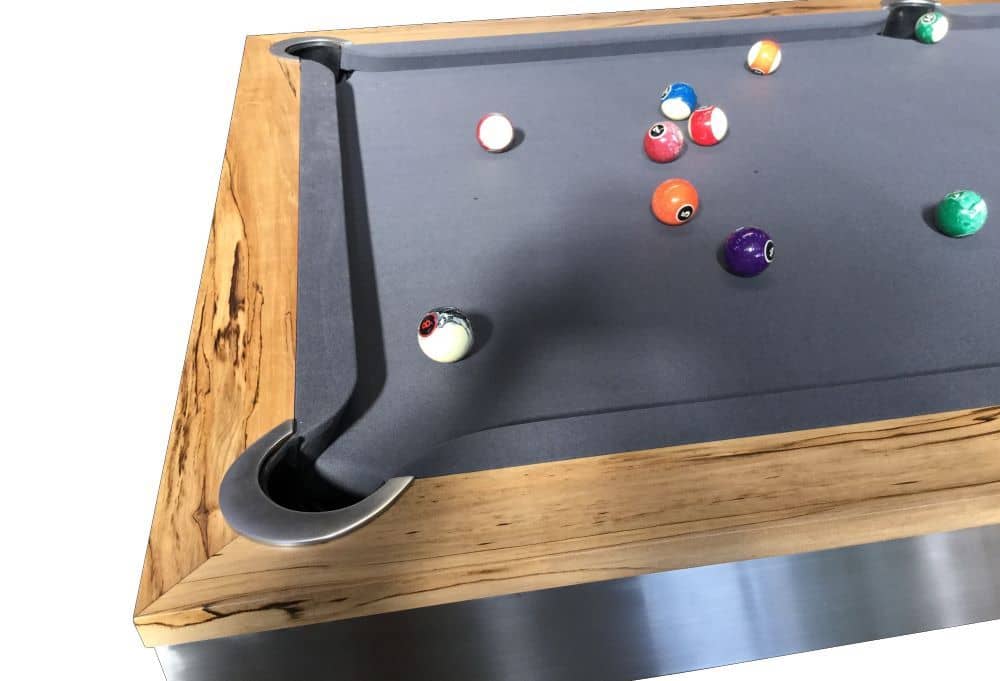
The Visionary – made from Blackheart Sassafras.
Pool tables made from Tasmanian Blackheart Sassafras are light yet robust with subtle grain or contrast. The material already has its natural lustre, but what makes it unique is its colourful veins and streaks of black and dark brown. Blackheart Sassafras is usually cut in quarters. This technique allows the pieces to be “book matched,” meaning the adjoining surfaces will match or mirror each other. The result is a pleasing, stunning symmetry.



